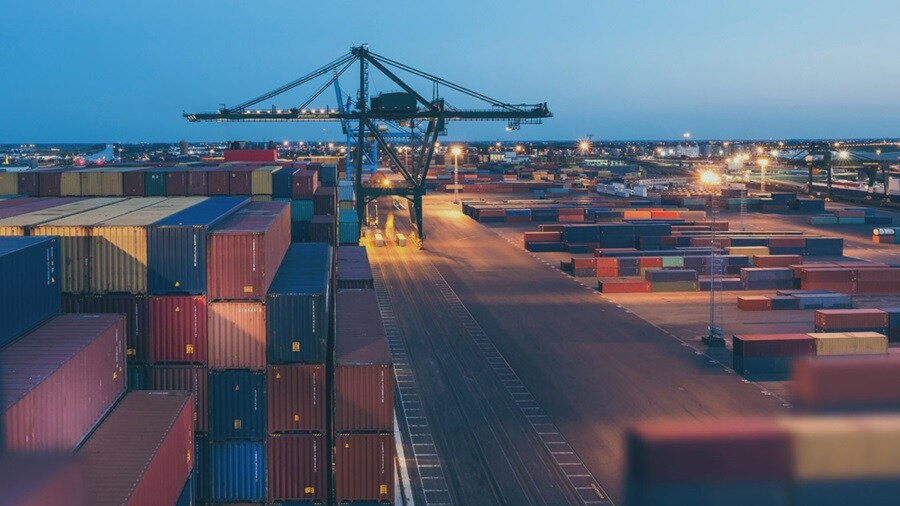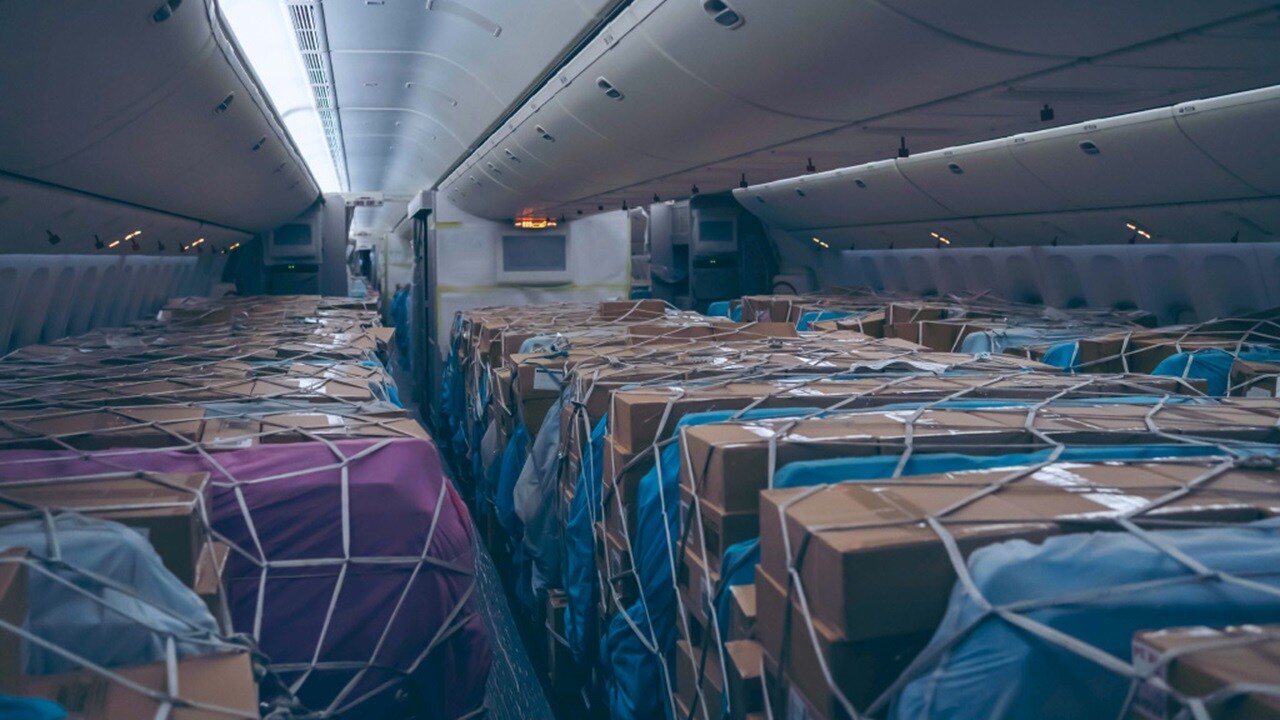The era of predictable unpredictability is not going away.
That’s what The Economist claimed back in December 2021 – and they were right. At present, the only thing we can be sure of is that we can’t be sure of anything, which means supply chains need to become more resilient. But how? An increasingly effective solution is air freight.
Here, we look at five of the biggest reasons for supply chain disruption and explain how air freight offers the flexibility, agility and resilience to beat them.

1. COVID-19
Both directly and indirectly, the impact of Covid-19 is still being felt across the globe. China is the world’s biggest exporter and continues to maintain its zero-Covid strategy, with fresh lockdowns and tight controls reducing manufacturing output and frequently delaying ocean freight
The Loadstar reports that, as of 21 October, the 14-day average ocean shipment volume at the port of Shanghai was down 15%, Shenzhen was down 21% and Ningbo-Zhoushan was down 29%. This has resulted in a ripple of disruptions across global supply chains and port congestion remains a major concern across North Europe ports. However, key hubs are showing some recent signs of improvement.
Our market update can help you stay abreast of the latest market movements.
In terms of indirect impact, all signs point towards traceability issues. Data from Fleetpoint shows 67% of European supply chain leaders citing end-to-end freight traceability as their biggest pain point when transporting goods and the pandemic has only exacerbated this problem.

2. Conflict in Ukraine
The conflict in Ukraine has had a fundamental impact on global logistics, adding further strain to an already pressured system which has ultimately caused widespread disruption.
Critical inland logistics and trade routes are blocked, Black Sea vessels aren’t moving and Russian companies – direct suppliers to more than 1,200 European businesses – are sanctioned out of the market. All of which are devastating global supply chains.
Crop supplies are arguably the most obvious example of this devastation. Approximately 20 million tonnes of grain and sunflower oil were trapped in Ukrainian ports until the 'grain corridor’ initiative was agreed upon in late July. Since then, Russia has both closed and reopened the corridor. With the deal only extended for a further 120 days from 17 November 2022, the outlook for crop-related supply chains is uncertain. Not only is grain a staple, but it’s also a base ingredient in a practically endless list of food products. As such, the market ambiguity is set to have a much deeper downstream impact than many currently realise.

3. Rising cost of oil
Oil is another example that is causing disruption. EU data shows that Russia supplied 25.9% of the EU’s petroleum oil in 2021. By the second quarter of 2022 this share was just 16.7% – marking a significant 8.3% drop.
The shortfall has naturally resulted in skyrocketing costs. At their peak, they reached almost $125 per barrel. This has fallen to around $90 in recent months, but still represents nearly double the pre-conflict price. It remains impossible to predict what may happen next.

4. Economic downturn
Unsurprisingly, the global economic downturn is having a profound impact on global supply chains. With Eurozone inflation running at 10.7% for October, prices are soaring, consumer confidence is dropping and demand for goods is shrinking, leading to a buildup of inventory.
The result of which is to increase pressure on profit margins while making it harder for companies to build accurate demand forecasts. This means logistics plans are being ripped up and reevaluated as businesses look to sell stock at full price while it’s in demand, rather than at a discounted price once demand drops.
Unforeseen bottlenecks, longer lead times and painful delays are the inevitable result. Unfortunately, nobody knows how severe the economic downturn will be, or how long it will last.

5. Unpredictable weather
And, finally, to perhaps the most uncontrollable reason for disruption: mother nature. Extreme weather challenges can often act as the knock-out blow that brings supply chains to a grinding halt.
When you look at the data, this is unsurprising. Just 11% of suppliers are fully prepared for weather-related disruption, according to a recent Harvard Business Review study. However, those that are prepared are in pole position to take advantage of demand while competitors fall behind. So, what can you do to get ahead?

Prepare for predictable unpredictability
Some events, like product launches or seasonal sales, can’t afford to be disrupted. For these, you need a trump card: air freight. Adding air freight into your mix of multimodal logistics solutions enables you to pivot modality quickly. So, even when disruption strikes, you can still take advantage of critical market opportunities.
Air freight gives you the flexibility to find new routes and workarounds to trade-route blockages or ocean-freight restrictions. It gives you a robust foundation to alleviate supply chain pressures created by the rising cost of oil. It gives you the competitive edge to hit demand while it’s hot at a time when end consumers are being more considerate about what they spend their money on. And it gives you the agility to make up for lost time and get back on schedule when you’ve been set back by unpredictable weather or hindered by limited ocean freight space.
The unique opportunity is utilising air freight as part of an integrated supply chain to increase resilience and keep your supply chain moving through disruption. Indeed, if you’re looking to prepare for predictable unpredictability, you needn’t look any further than the skies.
Anything you need, we’re here to help
I agree to receive logistics related news and marketing updates by email, phone, messaging services (e.g. WhatsApp) and other digital platforms, including but not limited to social media (e.g., LinkedIn) from A. P. Moller-Maersk and its affiliated companies (see latest company overview). I understand that I can opt out of such Maersk communications at any time by clicking the unsubscribe link. To see how we use your personal data, please read our Privacy Notification.
By completing this form, you confirm that you agree to the use of your personal data by Maersk as described in our Privacy Notification.
